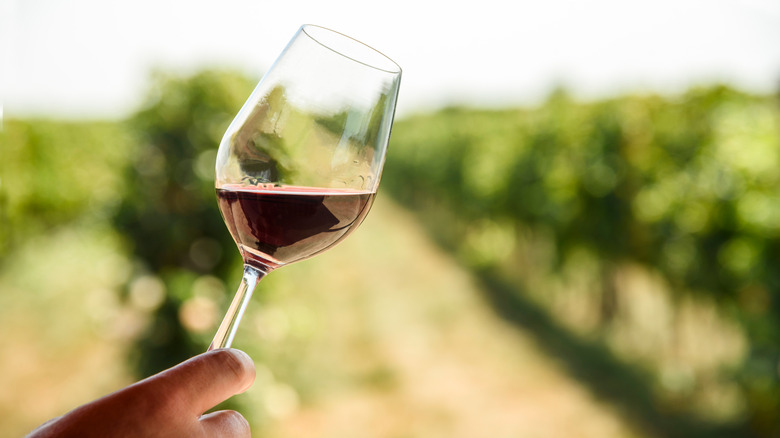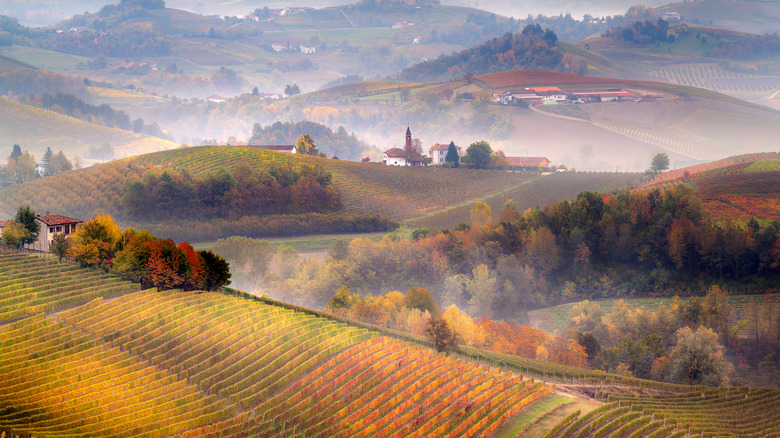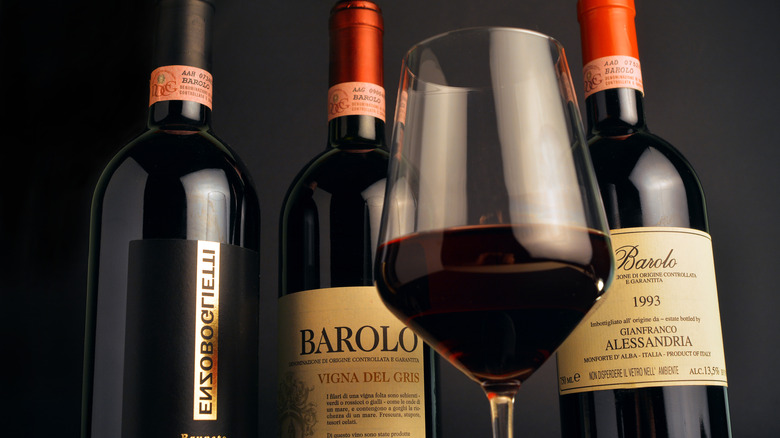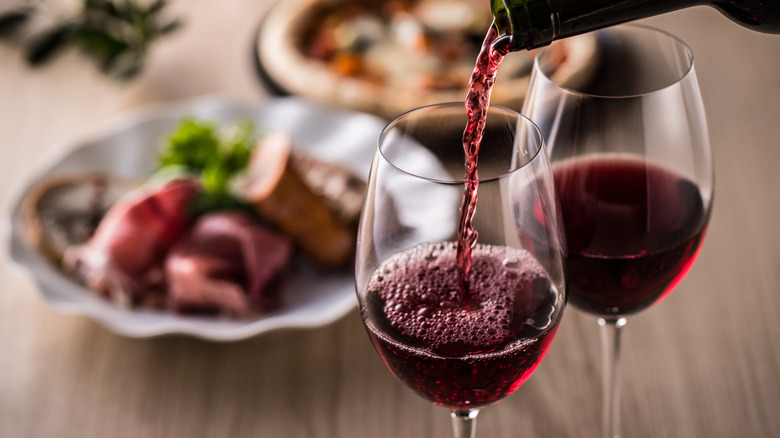Nebbiolo: The Fragrant Italian Wine Aficionados Hold In High Regard
Consider the lightest, most refreshing, and sweetest wine you can think of. Maybe White Zinfandel comes to mind, or a Riesling. Now, go to the complete opposite end of the flavor spectrum to the biggest, deepest, driest of them all. You've arrived in the world of Cabernet Sauvignons, Zinfandels, and, arguably, the king of bold wines, Nebbiolo. Nebbiolo is a lesser known grape varietal that may not have a huge following like Chardonnay and Pinot Noir do, but it has been around for hundreds of years, according to Delicious Italy. However, it is not grown en masse around the world like other grapes; you'll find it primarily in the Piedmont region of northern Italy, with small pockets in places like California, Chile, South Africa, and Australia, per MasterClass.
While the wines that come from Nebbiolo may not be as ubiquitous, make no mistake: The following is mighty. Fans will wait years for a vintage to become available, often to only let it age even longer in their own home cellars before finally opening a bottle. Nebbiolo wines are also known to be expensive, so if you're looking for a good, everyday drinker under $20, you might not find too many. So why all the hubbub?
First, an introduction
According to Wine Folly, Nebbiolo comes from the Italian word nebbia, which means "fog." It could be named that for a couple of reasons. First, the grape is harvested late, sometimes towards the end of October, when layers of fog lay underneath the vineyards. Around harvest time, the grapes develop a naturally occurring "bloom," a white-colored coating on the fruit, per The Demystified Vine, giving it a "foggy" appearance.
In the wine world, Nebbiolo is something of a problem child, as it is stubborn and sometimes hard to grow, according to MasterClass. It needs very specific conditions to thrive and won't tolerate otherwise. The varietal needs a warm climate with lots of sunlight. For this reason the vines are often planted on hillsides and slopes that face the sun. Similarly, the soil conditions must be flawless to its specifications — it enjoys "lime-rich mudstone" near the Tanaro River the most. It is one of the first grapes to blossom on the vine, yet takes the longest to reach peak ripeness, and is extremely opposed to inclimate weather. Yes, it's needy, to say the least. But when it's grown successfully, the payoff is grand.
All hail Nebbiolo
There are two types of Nebbiolo wine that tend to get wine aficionados in a frenzy, and their names are Barolo and Barbaresco, which are both composed of 100% Nebbiolo grapes. They are each named after the areas in which they are grown, both of which reside in the Piedmont region of northern Italy. A unique characteristic of both types of wine is that they tend to be lighter in color yet super powerful in their flavor profiles, according to Wine Folly. Experts often pick up aromas and taste notes of leather, tar, truffle, and rose. The tannins in these Nebbiolo wines are very high, according to MasterClass.
It is because of the prevalent tannins that Barolo and Barbaresco benefit so much from a long aging period. The wines need time to soften and become more palate-pleasing. According to Vine Pair, both of these wines are part of an exclusive Italian distinction called DOCG (Denominazione di Origine Controllata e Garantita) which is basically the gold medal of classification status for Italian wines. In order to qualify, Barolos must be aged for at least 38 months, 18 months of which must be in wooden barrels, before they can be sold. Barbarescos require two years of aging, per Wine Folly.
A Nebbiolo by any other name
Barolo and Barbaresco may get most of the glory when it comes to Nebbiolo, but the grape is used in a number of other Italian wines that may not break the budget as much. According to Serious Eats, Nebbiolo grapes are also grown in the Italian regions of Roero, Langhe, Ghemme, Gattinara, Valle d'Aosta, and Valtellina, and produce wines that are less tannic and lighter than Barolo and Barbaresco.
Whichever Nebbiolo you try, note that it will stand up to the richest and most decadent of cuisines. Think meat and cheese-heavy Italian cuisine (hello, lasagna!), creamy risottos showered in nutty Parmigiano Reggiano, anything with truffles, charcuterie boards, grilled meats, and umami-rich vegetables like mushrooms. Save your pennies, pick up a bottle, age it (if you can stand to wait) and enjoy.



